PHOTOGRAPHER’S PARADISE
Photographers can’t help themselves, we have to photograph – we are driven to shoot – just about everything in our life. I shoot the dog, the cat, the dishes, the spice cabinet, on and on. We are fascinated by color, texture, shapes, shadows – whatever catches our eye. The problem is that we become desensitized to our everyday surroundings and it is essential to get out and see some other part of the World every once in a while. It can be as close as the next town or as far away as Tibet – It doesn’t matter, just different. This awakens our vision, our awareness and of course our creativity – which is a good thing.
When Deb suggested that we go to Puerto Rico this winter for a week or so, I unhesitatingly said “Let’s do it”. That would get us out of this horrendous New England snow-stormy weather. On the Coast of Maine, we have already had 5’ of snow and it is only early in February! Temperatures have been pretty much hovering around zero degrees F most of the time – with minus 15 degree wind chill and below. Furthermore it would give me something else to shoot besides ice, snow and very cold birds. I hear it is warm in Puerto Rico.
 We did not travel by Cruise ship, but that was the first thing I saw upon leaving our San Juan hotel on that first morning – they are truly magnificent vessels. Two were in port that morning, each unloading several thousand passengers, or should I call them ‘shoppers’. Many of the Caribbean Islands get a major part of their income from these cruise ships for sure – Puerto Rico is no exception. The local merchants are always delighted when thousands of people, with money burning a hole in their pockets, get unleashed on their streets.
We did not travel by Cruise ship, but that was the first thing I saw upon leaving our San Juan hotel on that first morning – they are truly magnificent vessels. Two were in port that morning, each unloading several thousand passengers, or should I call them ‘shoppers’. Many of the Caribbean Islands get a major part of their income from these cruise ships for sure – Puerto Rico is no exception. The local merchants are always delighted when thousands of people, with money burning a hole in their pockets, get unleashed on their streets.
Speaking of streets. In San Juan many of the streets are paved with blue cobblestones – really beautiful. During the 16th and 17th centuries the Spanish would send a ship from Spain to the Caribbean using cobble stones as ballast. These stones were made from the slag leftover from metal foundries and were full of various metal impurities. Upon arrival in the Caribbean the Spanish would unload the stones and replace them with gold and silver to ship back to Spain. The stones left behind were used to pave the streets of San Juan. After many years, these impurities, I’m guessing copper is one of them, would turn the stones blue. I looked down at my feet and realized I was standing on ‘works of Art’. This was one of my first shots after arriving in San Juan – I knew I was going to like Puerto Rico.
 First of all, the temperature was 85 F or so – somewhere around 100 degrees warmer than it had been in Owls Head Maine the day before. Secondly there was no ice to slip on – very pleasant.
First of all, the temperature was 85 F or so – somewhere around 100 degrees warmer than it had been in Owls Head Maine the day before. Secondly there was no ice to slip on – very pleasant.
I do want to mention that the people of Puerto Rico were extremely helpful and hospitable. Everyone was more than willing to help us find where we were going plus suggestions for what to see and where to eat. The food was spectacular, from the fresh fish to the traditional Mofongo, a fried plantain-based dish. We always felt safe as if we were home.
San Juan was the major port for Puerto Rico since the Spanish claimed it as theirs in the late 1500’s. Per usual, the population was subjugated. Slaves were brought in and they built a fort – I should say Fortress! My God it goes on, for what seems a mile or more, with 30’ thick walls and gun/cannon towers every 50 yards or so. I was told it took the several hundred years to complete – I can believe that.
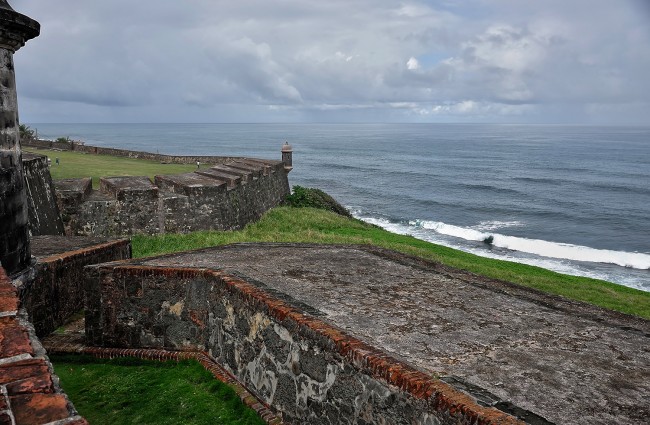 The juxtaposition of the modern city mixed in with the 500 year old fort is fantastic.
The juxtaposition of the modern city mixed in with the 500 year old fort is fantastic.
 I love the towers – I can’t help but picture a Spanish soldier, in shining armor, blunderbuss in hand, trying to shoot the enemy some 50’ below.
I love the towers – I can’t help but picture a Spanish soldier, in shining armor, blunderbuss in hand, trying to shoot the enemy some 50’ below.
 There is a flourishing horse and buggy touring service which provides a relaxed means of seeing the city. I must say the horses looked healthy and the classic carriages were well maintained
There is a flourishing horse and buggy touring service which provides a relaxed means of seeing the city. I must say the horses looked healthy and the classic carriages were well maintained
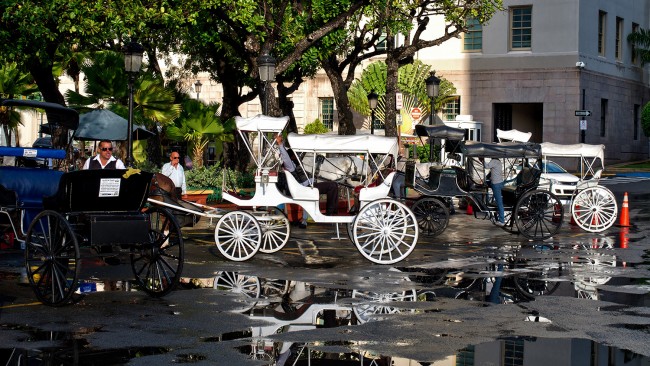 There were several short lived rain showers when we were in San Juan. The streets glistened when wet which added to the beauty of the city.
There were several short lived rain showers when we were in San Juan. The streets glistened when wet which added to the beauty of the city.
 Everywhere I looked there was Color – lots of that Caribbean Island Color.
Everywhere I looked there was Color – lots of that Caribbean Island Color.
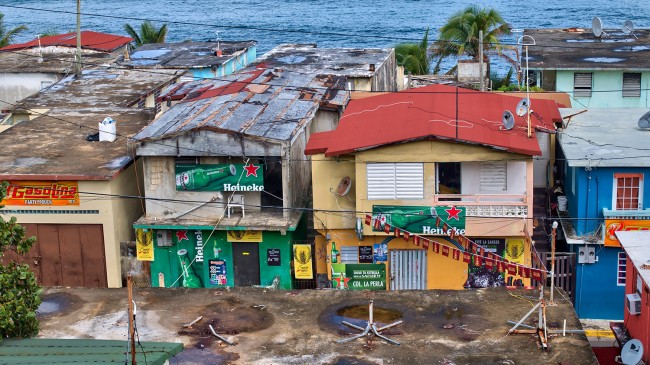 Many people assume that good photography is made only with the greatest, newest and most expensive cameras available. Actually, the quality of a photograph is made up of two components:
Many people assume that good photography is made only with the greatest, newest and most expensive cameras available. Actually, the quality of a photograph is made up of two components:
IQ (Image Quality, equals resolution, color accuracy, accurate focus, depth of field, bokeh, etc.)
Content (what is the photograph a picture of?)
In my opinion content is far more important than the IQ. The most basic point and shoot camera, used properly, in a favorable light situation, is capable of recording prize winning photos. When people say to ‘Wow! Great photo Rick, what kind of camera are you using’ it is as if after a good meal they ask the cook what kind of pots and pans did he use. It is not the camera, it is the vision and execution of the photographer. The camera is just a tool. It is all about seeing.
As with any “Artform” Control of the medium is the key. Did I capture what I envisioned, did I get the light values right, was the shutter speed fast enough to stop the motion, is the composition interesting, am I close enough – too close, did I isolate the subject so that the viewer will see what I saw? Did I get the most out of my camera.
With that in mind, I will say that I have been a photographer for many years. I have used everything from a 4×5 view camera to a point and shoot. I like to travel light. For this vacation trip I took a relatively small, fixed zoom lens camera, called an X Vario, made by Leica. The X Vario was not a big success for Leica, rather difficult to use due to its slow zoom lens, but I love the quality of both the camera and the images it can produce. The X Vario is on sale these days at about 1/5 the cost of the top shelf Leica M cameras. For me a vacation camera should not involve swapping lenses, carrying a lot of weight, nor should it be particularly expensive – cameras can easily get lost or stolen on vacation trips. Just a simple zoom lens, 28-70mm equivalent in this case, will cover most situations, most of the time. The only time I felt ‘camera inadequate’ was when we were watching surfers up in Rincon, you really need at least a 300mm telephoto to do that correctly. So I wracked the XV out to 70mm and got some lovely photos, just not what I would have gotten with a ton more gear.
We have a saying: The best camera is the one you have with you.
All Photographs Are © Rick Perry
Rick Perry Photographer Bio
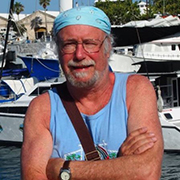 Rick Perry was born in Reading Massachusetts in the mid 1940’s. He studied music at the Berklee College of Music, Boston, where he received a degree in Jazz Composition and Arranging. He also studied Electrical engineering at Northeastern University for several years. He was active in the music business throughout the 1960’s playing New England Colleges as well as the Boston nightclub scene.
Rick Perry was born in Reading Massachusetts in the mid 1940’s. He studied music at the Berklee College of Music, Boston, where he received a degree in Jazz Composition and Arranging. He also studied Electrical engineering at Northeastern University for several years. He was active in the music business throughout the 1960’s playing New England Colleges as well as the Boston nightclub scene.
In the 1970’s, he was involved in the “Green Earth Natural Food Store, Exeter, NH and then opened up several ‘Real Food’ restaurants – (the ‘Loaf and Ladle’ and ‘Spaghetti Kitchen, both in Exeter NH). This experience led to his knowledge of “Natural Foods” preparation and ultimately to his employment as the Executive Chef for the Hurricane Island Outward Bound School based in Rockland Maine. He ran their food services from Maine to Florida for 20 years.
While at the Outward Bound School, he pioneered a whole foods diet for the students and staff. His published book ‘Hurricane Kitchen’ is still the Natural Food’s go-to-guide for institutional cooks wishing to serve ‘real food’ to their constituents.
In addition to running the food service for the school, he was also their resident photographer which enabled him to develop his technique and pursue his passion for photography. His photographic work was prominent in the school brochures throughout his tenure as well as being featured in the first two editions of Philip Conkling’s book “Islands in Time”. He retired from Hurricane Island OBS in 1995 and now lives in Owls Head, Maine, where he practices photography full time.
Website: Rick Perry Photographer
Follow Rick Perry on: Facebook


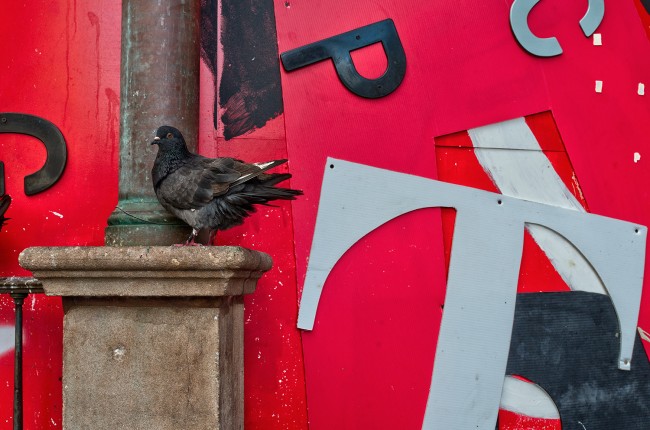

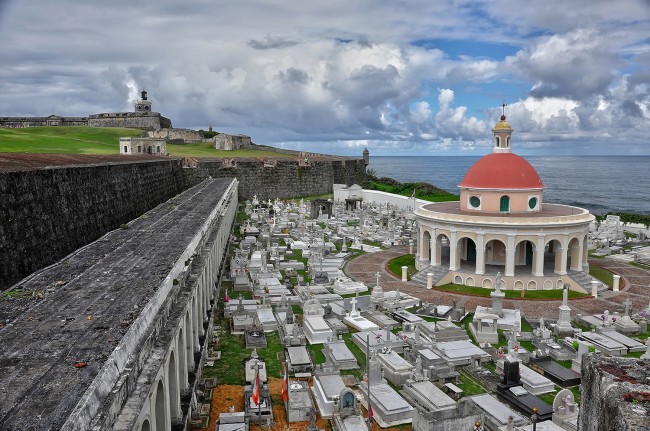
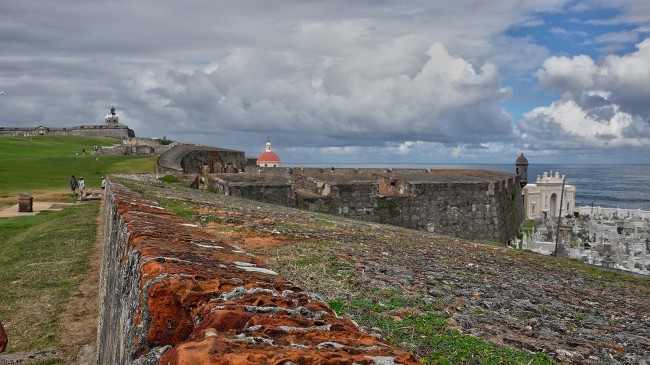

Hey, bubba. I finally realised what it is that hits me whenever I see one of your photographs. It’s a very simple yet profound feeling that is the awareness that the image I’ve been staring at, absorbed in, is a photograph.
Thanks, Lick.